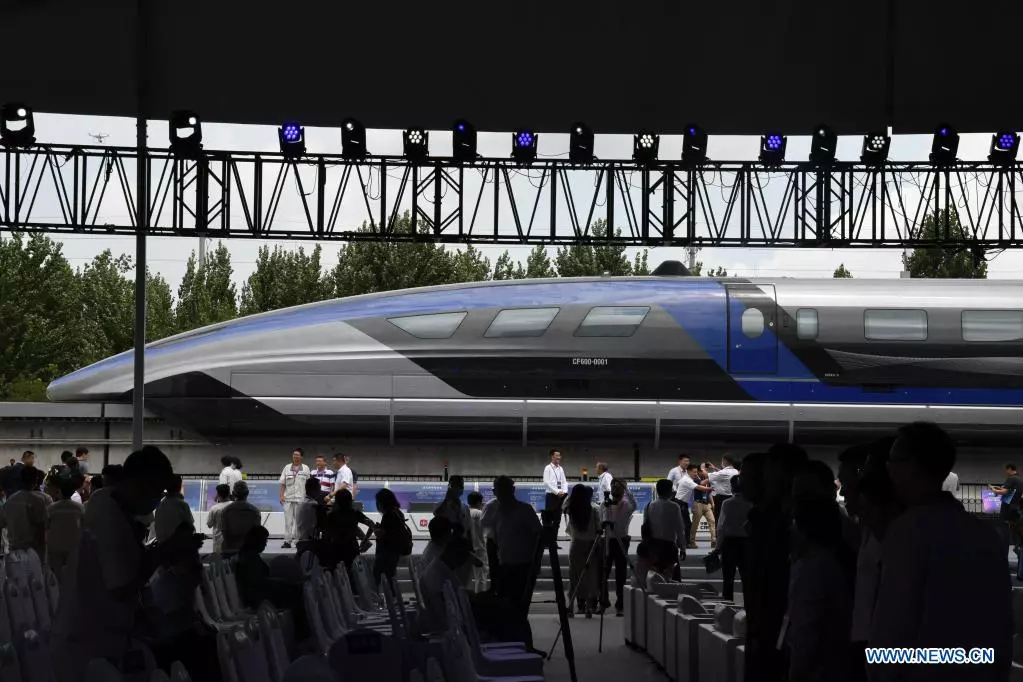The world’s fastest maglev train made its public debut in the coastal city Qingdao, East China’s Shandong province. It can reach the speed of 600 kph making it the fastest ground vehicle available so far. It is self-developed by the China railway rolling stock corporation (CRRC) Qingdao Sifang co. ltd. CRRC is an industrial base for manufacturing high-speed trains in China.
CRRC said that – “It is a cutting-edge scientific and technological achievement in the field of rail transit in the world.”
The high-speed maglev train will be suspended, driven, and guided without contact between the train and the track by means of electromagnetic force with its resistance only coming from air said Liang Jianying, deputy general manager and chief engineer of CRRC Sifang
The train can travel with two to ten carriages, each holding more than 100 passengers, according to Ding Sansan, chief engineer of the project.
The train provides the best solution for trips within the range of 1,500 km, Ding said, adding it fills the speed gap between aviation and high-speed trains.
Other features of the maglev trains are that they can start and stop quickly. They are safe and reliable, generating a low level of noise and small vibration. China tested the train in some densely populated regions showcasing its large passenger capacity which needs less maintenance.
It can fill the gap between high-speed rail of maximum speed 350kph and an aircraft of speed 800-900 kph. Distance of 1500 km between Beijing and Shanghai can be covered in 2 hours by air and 5.5 hours by high-speed rail but it is estimated that a maglev train will take 2.5 hours to cover the same distance.
The technology behind maglev trains.
The Maglev is named for the concept that it is built on, magnetic levitation. Powerful electromagnets are used to develop high-speed trains. The levitation of an object using natural magnetic fields is based on some practical science and physics concepts and principles.
There are two magnetic levitation technologies relevant to the Maglev.
- Electromagnetic Suspension – uses electronically controlled electromagnets in the train to attract to a track made of ferrous material, usually steel. This method is based on magnetic attraction.
- Electrodynamic Suspension – uses superconducting electromagnets or strong permanent magnets to create a magnetic field to push and pull the train using currents. This method is based on magnetic repulsion and powers Japanese maglev transport.
Yet high speed is just one major benefit of maglev trains. Because the trains rarely (if ever) touch the track, there’s far less noise and vibration than typical, earth-shaking trains. Less vibration and friction results in fewer mechanical breakdowns, meaning that maglev trains are less likely to encounter weather-related delays.
The fact that maglev systems are fast, smooth, and efficient doesn’t change one crippling fact – these systems are incredibly expensive to build.
It is impossible to know exactly how maglev will figure into the future of human transportation. Advances in self-driving cars and air travel may complicate the deployment of maglev lines.

Leave a Reply
You must be logged in to post a comment.